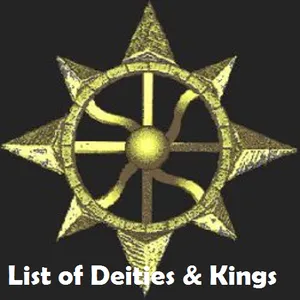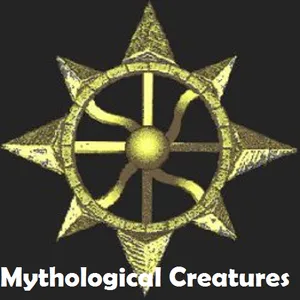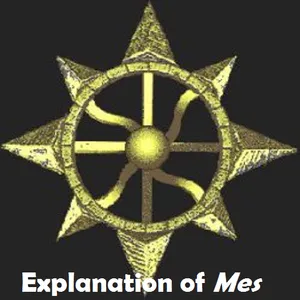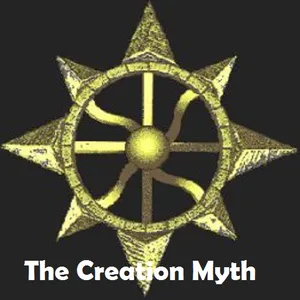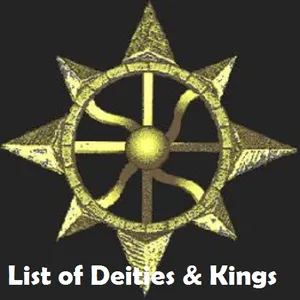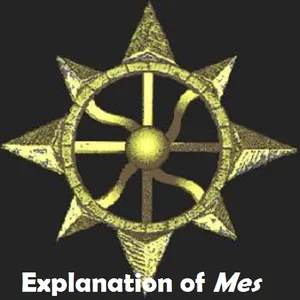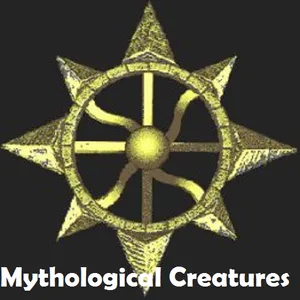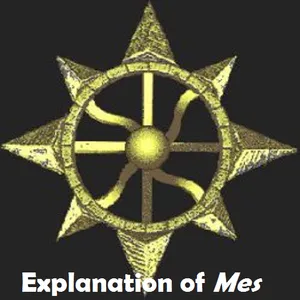Sumerian religion was the religion practiced and adhered to by the people of Sumer, the first literate civilization of ancient Mesopotamia. The Sumerians regarded their divinities as responsible for all matters pertaining to the natural and social orders.
Before the beginning of kingship in Sumer, the city-states were effectively ruled by theocratic priests and religious officials. Later, this role was supplanted by kings, but priests continued to exert great influence on Sumerian society. In early times, Sumerian temples were simple, one-room structures, sometimes built on elevated platforms. Towards the end of Sumerian civilization, these temples developed into ziggurats--tall, pyramidal structures with sanctuaries at the tops.
The Sumerians believed that the universe had come into being through a series of cosmic births. First, Nammu, the primeval waters, gave birth to An (the sky) and Ki (the earth), who mated together and produced a son named Enlil. Enlil separated heaven from earth and claimed the earth as his domain. Humans were believed to have been created by Enki, the son of An and Nammu.
The major deities in the Sumerian pantheon included An, the god of the heavens, Enlil, the god of wind and storm, Enki, the god of water and human culture, Ninhursag, the goddess of the earth and of fertility, Inanna, the goddess of sex, beauty, and warfare, Utu, the god of the sun, and Ereshkigal, the queen of the Underworld.
Sumerian religion heavily influenced the religious beliefs of later Mesopotamian peoples; elements of it are retained in the mythologies and religions of the Hurrians, Akkadians, Babylonians, Assyrians, and other Middle Eastern culture groups. Scholars of comparative mythology have noticed many parallels between the stories of the ancient Sumerians and those recorded in the early parts of the Hebrew Bible.
Download this app and learn about Sumerian Mythology!
----------------------------------------Disclaimer--------------------------------------------
I do not own any materials on this app, I provide the source in the bottom of the pages. I create Sumerian Mythology just to help people read and learn Sumerian Mythology easily. If any of this materials are against copyright, PLEASE CONTACT ME FIRST :) I will remove them ASAP.
Before the beginning of kingship in Sumer, the city-states were effectively ruled by theocratic priests and religious officials. Later, this role was supplanted by kings, but priests continued to exert great influence on Sumerian society. In early times, Sumerian temples were simple, one-room structures, sometimes built on elevated platforms. Towards the end of Sumerian civilization, these temples developed into ziggurats--tall, pyramidal structures with sanctuaries at the tops.
The Sumerians believed that the universe had come into being through a series of cosmic births. First, Nammu, the primeval waters, gave birth to An (the sky) and Ki (the earth), who mated together and produced a son named Enlil. Enlil separated heaven from earth and claimed the earth as his domain. Humans were believed to have been created by Enki, the son of An and Nammu.
The major deities in the Sumerian pantheon included An, the god of the heavens, Enlil, the god of wind and storm, Enki, the god of water and human culture, Ninhursag, the goddess of the earth and of fertility, Inanna, the goddess of sex, beauty, and warfare, Utu, the god of the sun, and Ereshkigal, the queen of the Underworld.
Sumerian religion heavily influenced the religious beliefs of later Mesopotamian peoples; elements of it are retained in the mythologies and religions of the Hurrians, Akkadians, Babylonians, Assyrians, and other Middle Eastern culture groups. Scholars of comparative mythology have noticed many parallels between the stories of the ancient Sumerians and those recorded in the early parts of the Hebrew Bible.
Download this app and learn about Sumerian Mythology!
----------------------------------------Disclaimer--------------------------------------------
I do not own any materials on this app, I provide the source in the bottom of the pages. I create Sumerian Mythology just to help people read and learn Sumerian Mythology easily. If any of this materials are against copyright, PLEASE CONTACT ME FIRST :) I will remove them ASAP.
Show More

